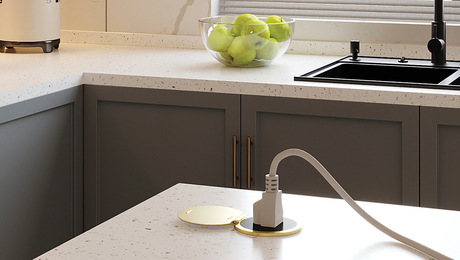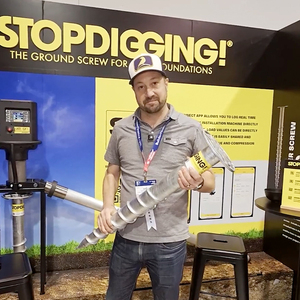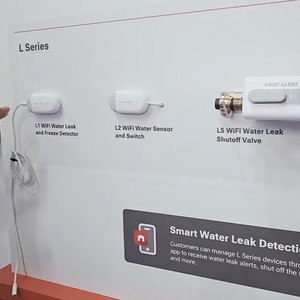I’m looking at putting in a geothermal heating and cooling system in my 2,800 sq ft home that I am planning on building this summer. I am building in the Ann Arbor Mi area. I recently found out that a system will cost about 23-25,000. OUCH!!! My builder recommends a reglar natural gas forced air system at about 8,000. I hate paying huge gas bills in the winter so the geothermal is catching my eye. but I would have to mortage that much more is it worth it. I am planning on staying in this house long term.
Need any comments, suggestions, complaints about geothermal verses regular forced air.
Please help the totally confused!!
Thanks Andy



















Replies
I'm a carpenter, not an HVAC guy, but one homeowner I talked with said his electric bill had gone through the roof, presumably from the fan moving all that air 24-7. I'm not saying this will happen to you, but be sure to research all the variables. Sometimes things seem to come out of nowhere.
As an example, I built a wine celler two years ago. The a/c unit used tap water to cool the unit; "Don't worry, once the volume of wine and cement come up to temp, it will hardly need to run at all." Well, the wine needs humidity, so the consultant added a small humidifier to the ductwork. Small plate heats up, water drips onto plate, and a/c blower pushes warm moist air into wine cellar triggering thermostat to turn on a/c drying out the air triggering humidifier- AAAAUUGH!!! Damn thing was dumping 2000gal./day down the drain!
I fixed it (sort-of), by hooking the a/c unit to a limestone fountain in the back yard to use as a cooling tower. We now have the fountain on a switch for fun , and an auto switch for the wine cellar. The evaporative cooling of the fountain is enough to meet the 6 degree differential of the a/c unit. Also added about $1500 to the wine cellar...
So, ballpark, you'll need to see $1,000/year in lower operating expenses for the geothermal to make sense. Are you bills several times that now.
If you put half the differential ($16,000 / 2 = $8,000) into better insulation and lower air infiltration, you'd likely be far ahead. $8,000 is a serious upgrade to your insulation and air infiltration. And it requires no fancy specialists like the geothermal does if it breaks.
piffin had a good point w/ this some time back.....what if you get a leak in the ground, who pays the EPA clean-up?
"piffin had a good point w/ this some time back.....what if you get a leak in the ground, who pays the EPA clean-up?"
To clean up water?
Many (most?) ground source heat pumps use anti-freeze as the circulating medium, not just water. And not all anti-greeze solutions are environmentally benign.
To nit pick on terminology, I have generally seen "geothermal" refer to areas where water is heated by nearby volcanic action or magma pockets, such as at Gyserville, CA, or in Iceland where almost the entire town of Reykjavik is heated by geothermal means. Where the ground acts as a heat sink as well as a providing a mild heat source during cold ambient temperatures, that is generally referred to as "ground source" ...
>And not all anti-freeze solutions are environmentally benign.
Mine uses food-grade, so a GSHP _can_ be installed in a way that this is no issue.
But they use a varity of non-toxic anti-freeze similar to that used in boats and RV's that can be discharged directly in to lakes.
For an antifreeze, either ethylene gycol or propylene gycol would be used. EG is highly toxic to us and to pets. A tablespoon can kill a cat. It is therefore important to store it careful and use only double-walled systems so a single leak doesn't contaminate potable water.
PG (sold as Sierra brand automotive antifreeze and others) used to be in most salad dressing, isn't toxic and, in my mind, doesn't neccesitate double-wall systems.
Either will bio-degrade in the groundwater through bacterial action but the rate of bio depends on water temp, nutrients, oxygenation, etc. Around 40 N lattitude, I'd expect the comtaminant plume to be about 500 feet long. No problem on my property (13 acres on the salt water), but for lots of people that might reach a neighbor's drinking water well.David Thomas Overlooking Cook Inlet in Kenai, Alaska
It's basically a heat pump. The idea is great but we don't have the viable technology to put that into practice.
A gas fired furnace is quite a piece of simple machinery which will last much long than any heat pump system, think about the replacement cost down the road.
Knowone here can really give you a difinative answer.
My suggestion would be to have your HVAC contractor run the load calculations for your home as it is drawn. Use standard building practices for insulation and air tightness. You will end up with equipment sizing based on the btu per hour need to heat and'or cool the house. Both types of equipment must be sized to meet that requirement in your area. Your HVAC contractor, energy consultant, or utilities provider can calculate operating cost for both systems. You will need to set the pay back perameters to determine which system is best- long term.
If your HVAC contractor can not, or is unwilling to, run the load calculations for you....find another contractor.
In either system going beyond standard construction practices in insulation and air sealing will reap tremendous benifits as David suggest.
One caution about GSHP. Senseable heat is only in the 95 to 105 degree F range. Much cooler than gas heat, so even though you are still getting the correct btu rerequirements, you feel like the moving air is cooler (it is). Takes a little getting use to, and requires a good distribution design.
Dave
> you feel like the moving air is cooler
Unless you use floor heat...
The installer I know is about $3500/ton for GSHP. I wonder what the load for this guy is that got him up to the price he mentioned. I agree on needing load calcs, etc.
i'm for extra insulation along with high efficiency conventional equipment... geothermal is a heatpump, may require auxiliary heating in colder climates ground loops can freeze up, so antifreeze required used to use straight tubing returning direction in the excavated area, now have a "bed" tubing that comes off a wide roll and incorporates several turns or loops of tubing across the width of the roll, less excavation, but geothermal source depletes more rapidly due to efficient extraction either way, that's how freezeup occurs, ground source is used up, unit won't give what you need even with anti-freeze
heavy insulation, good equipment, look into rinnai gas space heaters, both lp or natural gas with direct venting if open floor plan or areas where gravity feed will work, space heating can cut heating big for added insulation, bury 1/2" foam on the ceilings under the sheetrock, stop heat transmission thru framing, can also be appied to walls
>but geothermal source depletes more rapidly due to efficient extraction
That indicates a sizing issue rather than a technology issue. If you put in too small a furnace, you can run short, too. Just gotta know the depletion rates and size the loops right.
it is a sizing issue, and at $25K he's not getting a lot of size for a geothermal system if there's sticker shock now, it's time to go conventional biggest problem w these systems is underestimating the loop needs and a fix is expensive, especially if well, septic, house footprint etc. conflict with a later expansion
FIL has been operating a 5 ton GSHP for the past 12 years. Weather is milder here in KY, but sizing, load calculations, and installation/distribution designs are equally important anywhere. He has never had a freeze-up, or leak. Cost of his system 12 years ago was 12k. Allowing for cost increases over that time period, I would expect the same system to be from 16 to 18k, with the same distribution system. A better distribution system design, in his case, would have been desirable, and in todays dollars would add from 1 to 2k to the cost. Untill the most recent home built in our development he has had the lowest operation cost per square foot of any of the other 20 homes, including those using LP and/or conventional heat pumps.
Mileage of course may vary, of course, depending on ones driving habits.
Like Cloud, I can't stress enough how important system design and installation is in any HVAC system.
Dave
It was certainly worth it for me, in a house I built in NE Indiana. We used a well-source open-loop arrangement, with a WaterFurnace unit for heating and cooling, and forced air. No radiant tubing anywhere.
House was on a 30 acre lake, private, and northern Indiana has a terrific aquifer under most of it, with well outputs high enough (and with shallow drilling, too) to handle agricultural irrigation. At less than 50 feet of depth for the point, we had a huge supply of 48-degree water, year round.
Discharged into the lake, with the unit adding heat during the cooling season, and taking heat out during cold months. As I recall, our output temp was about 2 degrees different from source temp, each way.
Our cost for the HVAC unit, plus the labor to do the infeed, outfeed, and plumbing, was about $3,000 higher than it would have been had we used an LP gas-fired unit.
Well-sourced open loop units, with a water source at those kind of temps, really shine in the cooling season.